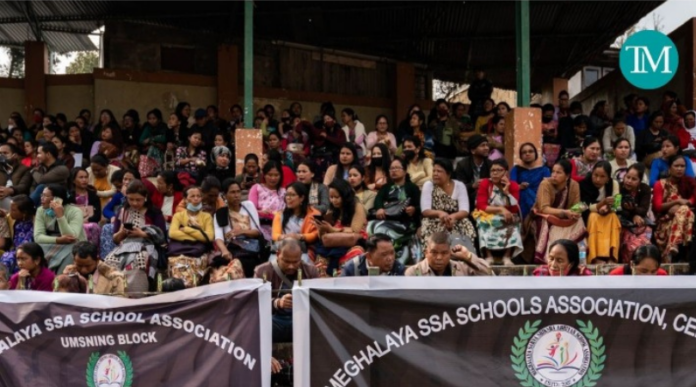THE STORY SO FAR
Part I of the series dwelt on mishandling of SSA funds that set the programme off its path. Part II focused on flaws in the implementation of the programme and Part III highlighted the sorry state of infrastructure of SSA schools.
SHILLONG:
ABHA ANINDITA
The Right to Education (RTE), as well as the Sarva Shiksha Abhiyan (SSA), have well-formulated norms on what the minimum number of teachers should be for primary and upper primary school sections.
The norms say that for the primary school, there should be one teacher for every 40 students and for the upper primary, one teacher for 35 students.
As per the Comptroller and Auditor General (CAG) report, 2017, Meghalaya reported 224 schools which had just one teacher. As of March 2016, 1748 primary schools had a shortage of teachers.
For the teachers engaged, the state government had not taken any steps to ensure training for them, despite an RTE mandate, which states that teachers who don’t possess the minimum qualification should comply with the act within five years of recruitment.
Seventy-seven per cent primary teachers and 85 per cent upper primary teachers were untrained as of March, 2016.
The inconsistencies of the various departments was also due to a severe lack of planning.
When the SSA started, every state government was mandated to prepare a perspective plan, laying out long-term goals for universalisation of education by March, 2013.
The guidelines also mandated the preparation of annual plans which could ultimately achieve the perspective plan.
In Meghalaya, CAG reports revealed that between 2010-16, there was no perspective plan prepared due to which the state failed to lay down any detailed long-term goals for universalising education in the state by 2013. Consequently, the state’s target was not achieved even by 2015-16.
One objective of universalising education was also to take care of children with special needs, (CWSN) with disabilities of learning, vision, hearing, speech, mental retardation, autism, etc.
The SSA CWSN Manual prescribes expenditure of about Rs 3,000 per year on a child with minimum of 40 per cent disability.
In Meghalaya, coverage of children identified under CWSN declined to 66.64 per cent in 2015-16 from 78.86 per cent in 2010-11. Even when funds of Rs 19.32 crore were released for 66,136 children, the state only covered 48,629 children, utilising Rs 11.16 crore between 2010-16.
There was no record of expenditure of the remaining amount.
More so, for children covered under CWSN, the SSA mandated the education department to facilitate transport for children to attend school.
In East Khasi Hills, while Rs 8.13 lakh was sanctioned for 271 eligible children at the rate of Rs 3,000 per child, only Rs 2,400 per child was given, resulting in a short payment of Rs 1.63 lakh.
While the state blamed the Centre for not releasing funds for CWSN, reports show that the education department had unspent money at the end of every financial year between 2010-16.
The state’s lack of planning also resulted in numerous other inadequacies, which resulted in many non-compliances.
Even fund allocation went unmonitored. Between 2010-16, in Jaintia Hills, Rs 2.40 lakh was given to 48 ineligible schools for maintenance while 393 eligible schools were not given anything.
Inadequacies of the state education system are blatant even today. With historical misdoings still not seeing any correction, it is evident why reports have ranked Meghalaya in the bottom half of the country for education.


